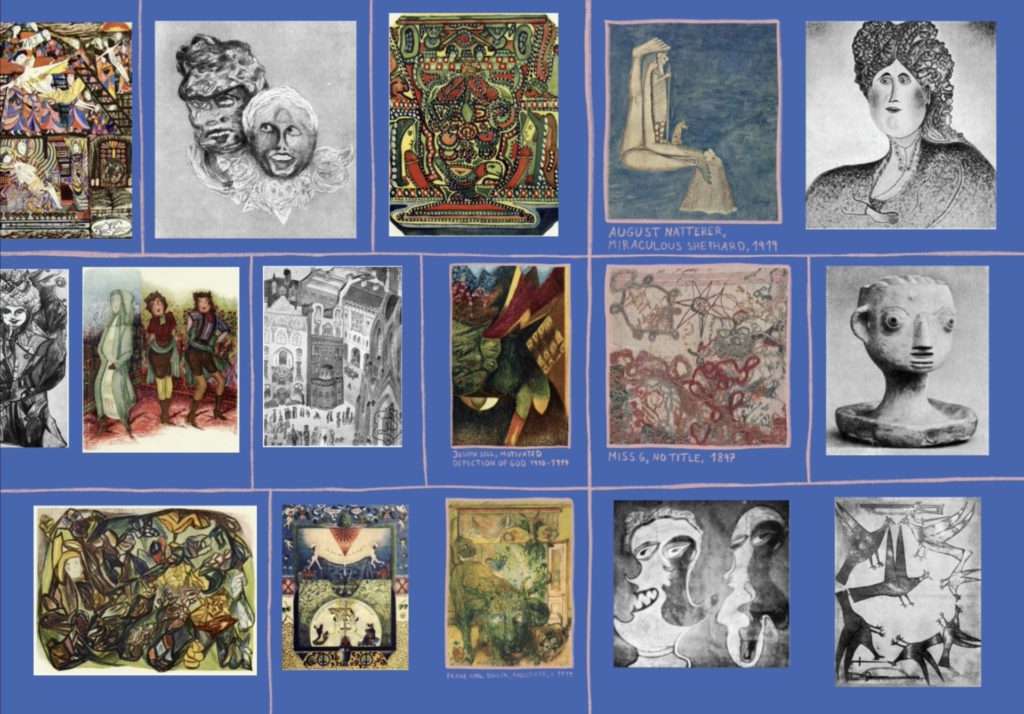
The second piece in our week-long celebration of the 20/21 Student Undergraduate Prize winners comes from recent graduate in History of Art, Luisa Hahn. Here she explores some of the influences that shaped her video podcast on Outsider Art, and the freedom that came with the invitation to submit an assessment in a creative format.
I was very excited when one of the main assessments for my senior honours seminar in History of Art was announced to be a video podcast. Still very much in the early phase of the COVID-19 pandemic, I had not yet adapted very well to the shift to online learning and the prospect to be able to do an assessment – that did not take the form of a 24-hour exam or an essay written with restricted access to the library – was promising.
We were allowed to choose a topic for this assignment quite freely, as long as it was roughly within the location and time period of our seminar topic ‘The Dawn of Modernism: Vienna 1867-1934’. The task was then to create a short video podcast, roughly eight minutes long, on the chosen topic. I chose to use the opportunity offered by these relatively loose guidelines to combine two areas of interest which I was not usually able to apply in my History of Art assessments: the first interest related to my Joint Honours subject of Psychology, specifically the History of Psychology, exploring the conceptualisation of psychiatric conditions and diagnosis; the second interest lay in creating digital art.
Ultimately, I chose to work on artworks created by people who were patients or inmates of psychiatric institutions and as such seen not as artists, but as ‘outsiders’. These artworks were commonly labelled ‘Outsider Art’ as their makers supposedly existed outside of society and were therefore able to produce a ‘purer’ art, expressing their innermost psyche rather than societal influences. As this is a rather large topic, and eight minutes of spoken content a lot less than one might initially think, I had to narrow the scope quite drastically and decided to focus on one specific artist and patient to illustrate my broader conclusion that the interpretational framework of artworks created in early 20th century psychiatric institutions should be shifted. If more than the diagnosis is considered in the interpretation, then contemporary trends and references can be detected and the inaccuracy of labelling these artists ‘outsiders’ becomes apparent.

When it came to my second interest in digital art, I had recently acquired a tablet with a pen which allowed me to create digital drawings easily, and I was keen to try out the animation features. However, since hand-drawn animation is very time consuming I had not attempted any bigger projects and it seemed that this assignment was a good opportunity. I felt that moving images could help illustrate the content of my podcast much better than presentation slides could, especially as that was exactly what online lectures had mostly been like during that semester. Despite being new to animation and teaching myself in the course of the project, I hope that I was able to create an engaging video, that discussed an academic topic in a different and creative way, providing a short break from standard formats of online learning.
About Luisa Hahn
Originally from Germany, Luisa Hahn moved to Scotland in 2017 to study her undergraduate degree at the University of Glasgow. She began that degree planning to do a Joint Honours in Psychology and Philosophy but enjoyed a Level 1 module in History of Art so much that she pursued it to Honours level. Since graduating in June 2021, she has been working as a freelance animator, has undertaken a placement with a painting conservator, and plans to return to postgraduate study in History of Art before the end of the year.
About this Series
This piece is part of a series celebrating and showcasing the work of the 2020/21 Student Undergraduate Prize winners at the School of Culture and Creative Arts, awarded in recognition of excellence in the diverse and innovative modes of assessment our School offers. Their work captured experiences common to many of us over the last year or so, and inspired us as they explored new ways to be creative with their assessments. Strong themes that come through in these winning entries are isolation, emotions which touch on trauma, and the power of communication.

